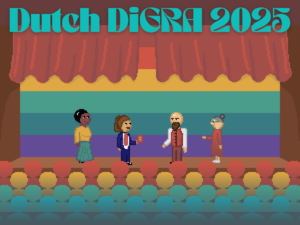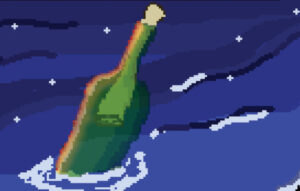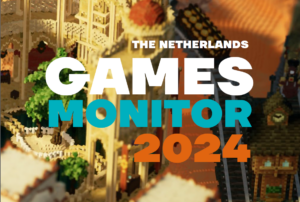
Concluding the RMeS Summer School 2024: Environmental Media, Laura op de Beke and Stefan Werning of the Utrecht Game Lab organised a workshop for RMA students to facilitate ecological thinking by redesigning (or: ‘hacking’) board games.
Inspiration for the method comes from the work of Chloé Germaine and Paul Wake
(https://doi.org/10.2307/jj.10819591.26) on board game hacking as well as earlier work by the Utrecht Gamelab on co-designing board games to foster critical thinking through the ‘language’ of games
(https://doi.org/10.23860/JMLE-2020-12-3-8).
To begin, op de Beke and Werning outlined the theoretical context for game co-design, both with regard to other practice-based game research methodologies and the emerging field of ecogames research. Using the games Ms. Monopoly and Monopoly: Green Edition as examples, participants discussed in a plenary setting how publishers like Hasbro already re-designed their own game franchises to intervene in popular discourse, with mixed success. However, the discussion also brought to the fore that critiquing the procedural representation of complex, multifaceted issues like gender equality and the climate emergency in these games was fairly straightforward and consensual, thinking of alternative, more nuanced designs was much more difficult; each re-design suggestion thereby reflected the contributors’ own, idiosyncratic interpretations of the issue.
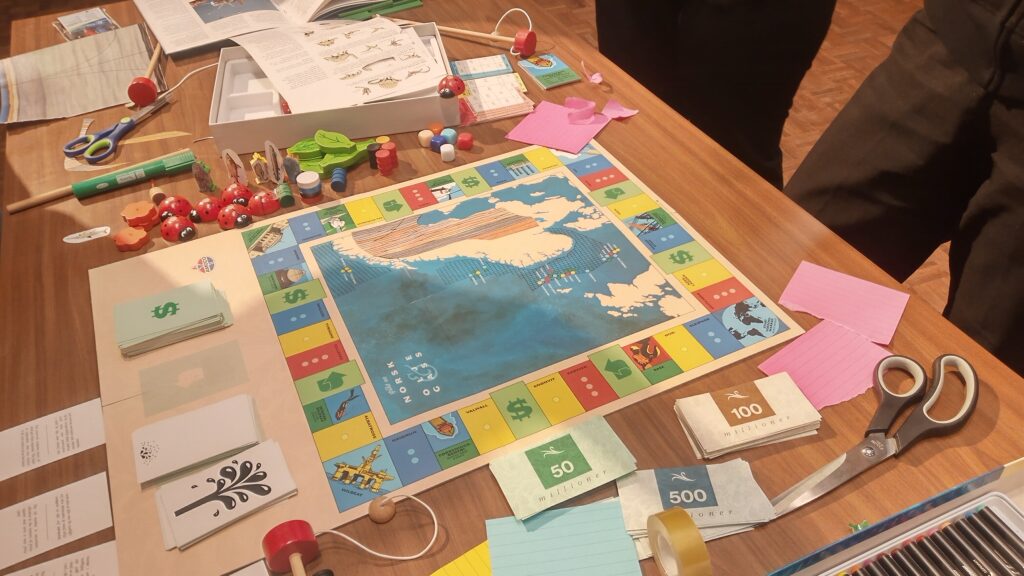
After a short break, students formed small groups and selected analogue prototyping materials as well as one of several older board games on offer as ‘material’ for their own re-design exercise. Among the games chosen were the classic (Dutch) game Ganzenbord/Game of Goose, the iconic Monopoly, the 1980s stock trading board game Het Aandeelenspel and the Norwegian Game of Oil and Gas, which was commissioned by the Norwegian Association of Oil and Gas in 1990. The resulting modifications, after approximately one hour of brainstorming and prototyping, were as diverse, both thematically and in terms of gameplay, as the selection of original games.
The group hacking The Game of Goose were inspired by the game’s iconography. Traditionally, the board is covered with a series of tiles spiralling towards a cental tableau featuring an image of the ‘good life.’ This is commonly figured with a wholesome scene of a child feeding a flock of geese. The version of the game that was provided, however, featured a more agonistic scene of geese ransacking a picnic. The students identified this as an act of animal revolution. Their hack involved transforming The Game of Goose into storytelling game. Rather than start on the outside of the board, players start at the center and work their way back. Each numbered tile becomes a prompt: what happened in this year that led to the revolution? What conditions did the geese struggle against and how did they organise themselves? Moreover, the hack involved a kind of ‘legacy’ mechanic where players were invited to mark the board with extra symbols and icons, inspiring consecutive game sessions. The kind of gameplay proposed by the hack resembles the futurist planning method called ‘backcasting,’ which requires identifying a specific desirable future, and thinking backward, step by step, until a pathway has been traced linking it to the present.
The group hacking the Norwegian Game of Oil and Gas had decorated the rather abstract game board with images of fish sourced from the game’s accompanying booklet endorsing the extraction of oil and gas from the North Sea by the Norwegian government. Though the students lamented not having found a way to assign the fish more procedural agency, populating the game board with the denizens of the ocean nevertheless creates visibility for them as stakeholders. Another aspect of the hack they proposed involved introducing another role: the eco-terrorist. This player would benefit from a kind of mirroring of the rules with the goal to sabotage the oil and gas industry. This hack plays into the current board game trend for asymmetric games, where players are required to adopt different tactics depending on the role they play.
The stock trading board game Het Aandelenspel was renamed Green Points, to make explicit that the hack would about greenwashing in financial investment. The abstract nature of the game had been complicated by assigning all players secret roles: ranging from ‘NGO’ to ‘con-artist, and ‘humanities researcher.’ In this way, the goup explained, gameplay would then be more about finding out each other’s roles, and thus exposing each other’s political leanings and private interests.
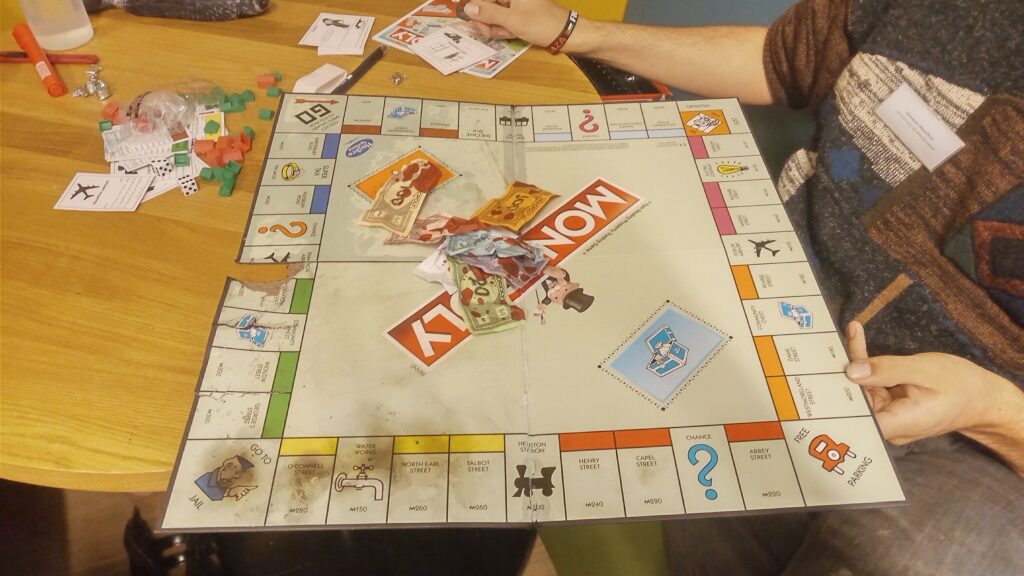
Finally, the group ‘co-designing’ Monopoly chose to highlight the extractivist and (self-)destructive nature of unchecked capitalism, which also in real life often destroys the ‘playing field’, i.e. the shared environment, making it impossible for future generations to keep ‘playing the same game’. By literally disfiguring and partly destroying the game board, e.g. using water and fire, while playing, players ultimately render the game as a physical object ‘unplayable’, as street tiles become impossible to read and the boundary between tiles and board becomes blurred. In that sense, the group shifted the focus from the game-as-text (or: as ‘object’) to the act of playing Monopoly as a performative, artistic practice.

